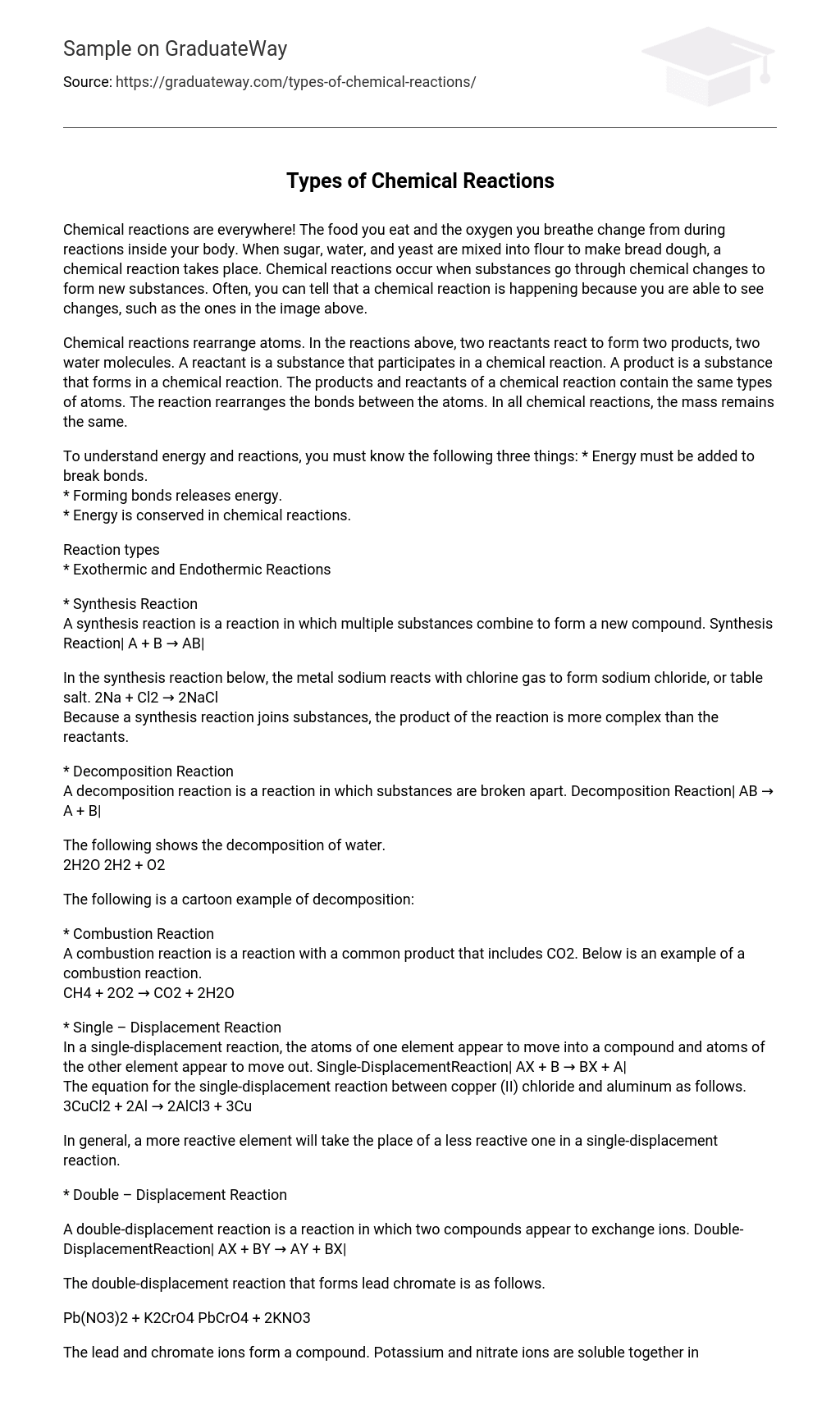Chemical reactions are everywhere! The food you eat and the oxygen you breathe change from during reactions inside your body. When sugar, water, and yeast are mixed into flour to make bread dough, a chemical reaction takes place. Chemical reactions occur when substances go through chemical changes to form new substances. Often, you can tell that a chemical reaction is happening because you are able to see changes, such as the ones in the image above.
Chemical reactions rearrange atoms. In the reactions above, two reactants react to form two products, two water molecules. A reactant is a substance that participates in a chemical reaction. A product is a substance that forms in a chemical reaction. The products and reactants of a chemical reaction contain the same types of atoms. The reaction rearranges the bonds between the atoms. In all chemical reactions, the mass remains the same.
To understand energy and reactions, you must know the following three things: * Energy must be added to break bonds.
* Forming bonds releases energy.
* Energy is conserved in chemical reactions.
Reaction types
* Exothermic and Endothermic Reactions
* Synthesis Reaction
A synthesis reaction is a reaction in which multiple substances combine to form a new compound. Synthesis Reaction| A + B → AB|
In the synthesis reaction below, the metal sodium reacts with chlorine gas to form sodium chloride, or table salt. 2Na + Cl2 → 2NaCl
Because a synthesis reaction joins substances, the product of the reaction is more complex than the reactants.
* Decomposition Reaction
A decomposition reaction is a reaction in which substances are broken apart. Decomposition Reaction| AB → A + B|
The following shows the decomposition of water.
2H2O 2H2 + O2
The following is a cartoon example of decomposition:
* Combustion Reaction
A combustion reaction is a reaction with a common product that includes CO2. Below is an example of a combustion reaction.
CH4 + 2O2 → CO2 + 2H2O
* Single – Displacement Reaction
In a single-displacement reaction, the atoms of one element appear to move into a compound and atoms of the other element appear to move out. Single-DisplacementReaction| AX + B → BX + A|
The equation for the single-displacement reaction between copper (II) chloride and aluminum as follows. 3CuCl2 + 2Al → 2AlCl3 + 3Cu
In general, a more reactive element will take the place of a less reactive one in a single-displacement reaction.
* Double – Displacement Reaction
A double-displacement reaction is a reaction in which two compounds appear to exchange ions. Double-DisplacementReaction| AX + BY → AY + BX|
The double-displacement reaction that forms lead chromate is as follows.
Pb(NO3)2 + K2CrO4 PbCrO4 + 2KNO3
The lead and chromate ions form a compound. Potassium and nitrate ions are soluble together in water, so they do not form a compound. Instead, they stay in solution just as the lead and nitrate ions were before the reaction. The following is a cartoon example of a double displacement reaction:





